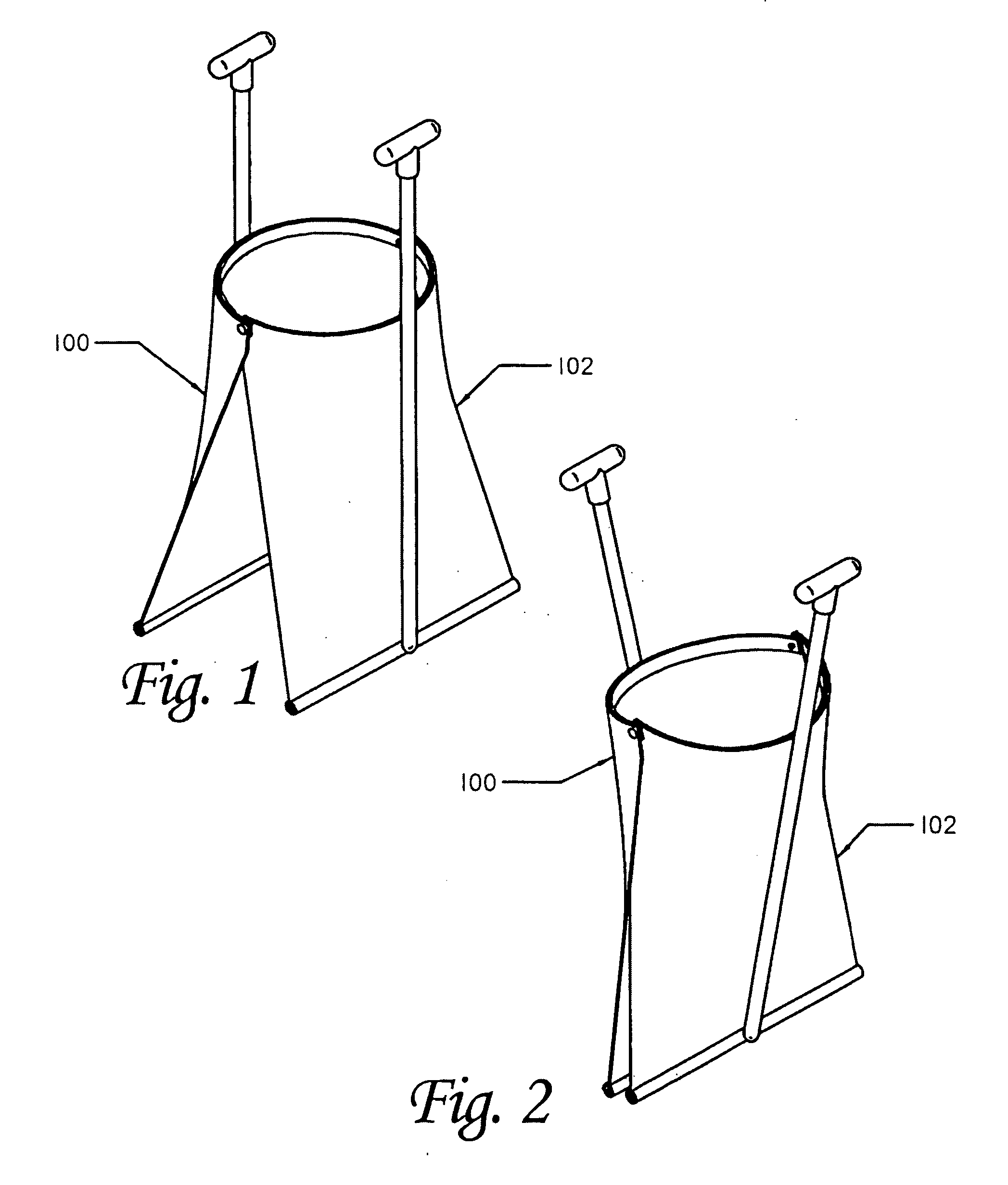Leaves and yard debris removal tool
- Summary
- Abstract
- Description
- Claims
- Application Information
AI Technical Summary
Benefits of technology
Problems solved by technology
Method used
Image
Examples
embodiments
[0036] One embodiment of a debris removal tool according the to present invention is illustrated in FIGS. 1-3. As shown, it comprises two opposing substantially identical halves, 100&102, pivotally connected by pins or bolts, 101, so that they can open and close. The novelty of the invention is primarily in the configuration and construction of the blade element of the scoop. Its shape allows it to form the majority of the structure of the tool with the addition of only a few parts necessary to complete the tool. The upper corners of the opposing blades are pivotally connected so that as the handles are moved outward, the lower edges of the blades move together.
[0037] Each half of the tool preferably comprises the same identical set of elements. For simplicity the structure of only one half will be described, with the understanding that the discussion applies equally to the other half.
[0038] Referring to FIG. 4 the elements of a first embodiment of the tool can be seen. Central to...
PUM
 Login to View More
Login to View More Abstract
Description
Claims
Application Information
 Login to View More
Login to View More - R&D
- Intellectual Property
- Life Sciences
- Materials
- Tech Scout
- Unparalleled Data Quality
- Higher Quality Content
- 60% Fewer Hallucinations
Browse by: Latest US Patents, China's latest patents, Technical Efficacy Thesaurus, Application Domain, Technology Topic, Popular Technical Reports.
© 2025 PatSnap. All rights reserved.Legal|Privacy policy|Modern Slavery Act Transparency Statement|Sitemap|About US| Contact US: help@patsnap.com



